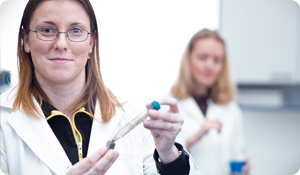
If you have type I diabetes, the constant daily routine of insulin injections or pump maintenance gets tiresome. Now imagine an insulin delivery system that would mean you'd only need to get an injection every 10 days or so.
Researchers have developed a network of what they are calling "nanoparticles," which deliver insulin to the cells on an as-needed basis, reports U.S. News & World Report. So far, the nanoparticles have only been tried out in mice, where they were so successful that the mice maintained normal blood sugar levels for more than a week. While it will be quite some time before "nano medicine" would be available for people with diabetes, the research is promising.
"It's very exciting," says Joel Zonszein, MD, director of the Clinical Diabetes Center at Montefiore Medical Center in New York City. "It's in the very early stages and a very long time from being approved for use, but it's smart and ingenious. This could be a real breakthrough."
How Nanoparticles Work to Manage Diabetes
Calling it a system that could one day change how insulin is delivered, Yael Tobi Harris, MD, PhD, an endocrinologist at North Shore-LIJ Health System in Great Neck, NY, says the nanoparticles would allow individuals with type 1 diabetes much more flexibility.
"Right now, we have two separate pieces when it comes to insulin delivery," she says. "One system (the blood glucose monitor) measures glucose and another one (pump or syringes) delivers insulin. With nanoparticles, this would be a closed-loop system."
Some nanoparticles are coated with a negative charge and others with a positive charge. When the nanoparticles are injected into the body, they are attracted to each other and hook up to form a "nano network."
The nanoparticles within the network have an insulin-containing core. When the individual's blood sugar is high, Harris explains, the material in the nanoparticles that holds the insulin breaks down and then the insulin is released.
Benefits of Using Nanoparticles to Manage Diabetes
With the nano network, there would be no need to test the blood sugar levels as often since the insulin would be released in just the right amount. And while individuals with type I diabetes must now keep track of the carbohydrates they eat, this would no longer be necessary. The insulin dose would automatically match the food consumed.
While the research is promising, it will be some time before nanoparticles would be a replacement for injecting insulin. "Whether it's safe enough and will work similarly in humans still needs to be determined," Harris says.
One area that still needs fine-tuning: ensuring that neither too little nor too much insulin is given through the nanoparticles. Also to be determined: how someone would know when a new injection of nanoparticles is needed.
Yael Tobi Harris, MD, PhD, reviewed this article.
Sources:
Gordon, Serena. "'Nano' Medicine Might Someday Free Diabetics from Daily Needles." 28 May 2013. Health Day News. U.S. News & World Report.
http://health.usnews.com/health-news/news/articles/2013/05/28/nano-medicine-might-someday-free-diabetics-from-daily-needles
Gu, Zhen. "Injectable Nano-Network for Glucose-Mediated Insulin Delivery." 2 May 2013. ACS Nano.
http://pubs.acs.org/doi/abs/10.1021/nn400630xprevSearch=nano%2Bdiabetes&searchHistoryKey





